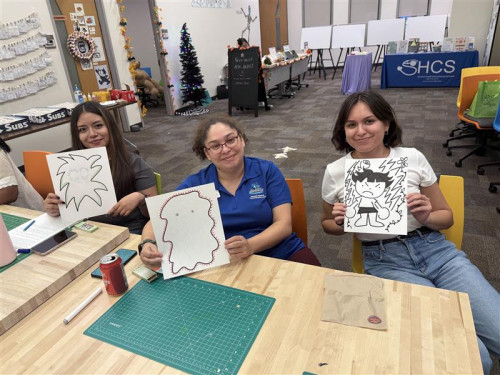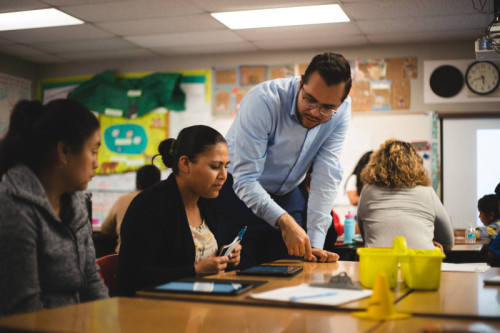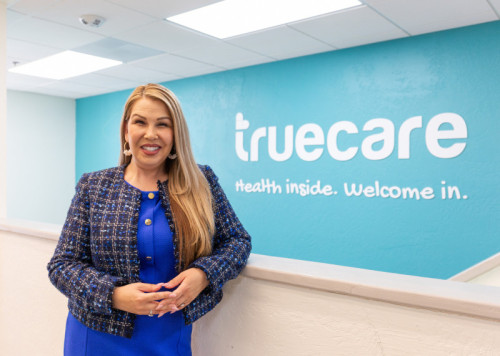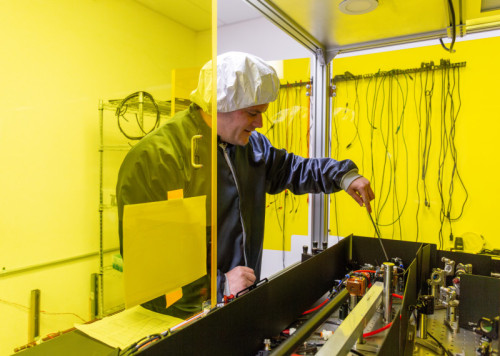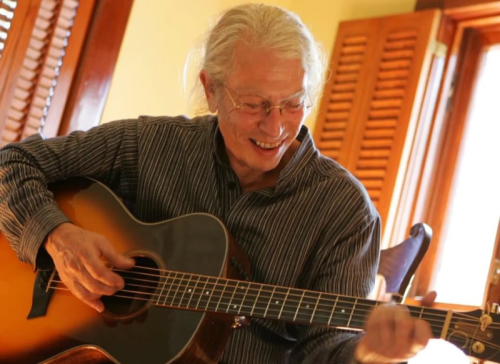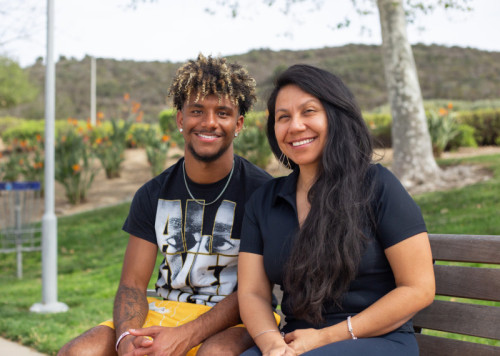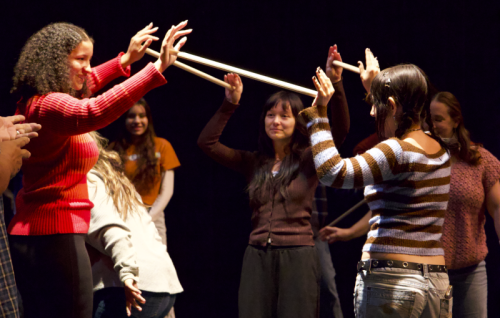The Makery Hosts Art and Mental Health Workshops
21
October
2025
|
16:01 PM
America/Los_Angeles
By Rae Lynch
"; items += "
"; items += "
"; items += "
" + val['title'] + "
"; if(val['subtitle']){ items += "
" + val['subtitle'] + "
"; } items += "
"; if ((val['showpublishdate'] !== 0 && showPublishDateHeadlineSetting) || showPublishCityHeadlineSetting) { items += '
'; if (val['publishcity'] && showPublishCityHeadlineSetting) { items += '
' + val['publishcity'] + '
'; } if (val['showpublishdate'] !== 0 && showPublishDateHeadlineSetting) { items += "
"; items += "
" + date_month + "
"; items += "
" + date_day + "
,"; items += "
" + date_year + "
"; items += '
'; items += ' | '; items += '' + val['publish_time'] + ''; items += 'America/Los_Angeles'; items += '
'; items += '
'; } items += '
'; } items += "
" + val['message'] + "
"; items += "
Read more
"; items += "
"; items += ""; items += tags_items; items += multimedia_count; items += "
"; } }); items +="
"; if (1 > 1) { pp_jquery(".pp_blockheadlines_items-7542739").append(items); } else { pp_jquery(".pp_blockheadlines_items-7542739 .pp-headline-block").hide().css("opacity","0"); pp_jquery(".pp_blockheadlines_items-7542739").append(items); pp_jquery(".pp-headline-block:visible").animate({"opacity":"1"},300); } }); } pp_jquery(window).on('load', function() { /** * targets calcEqualHeights function (modules_v2h.js) * calculates consistent height for all visible items per block module */ pp_jquery('.pp_blockheadlines_items-7542739 .pp-headline-block').each( function() { PP_MODULES.calcEqualHeights(this); }); }); pp_jquery(document).ajaxComplete(function() { /** * when using block item nav button calcEqualHeights * function (modules_v2h.js) will be executed */ pp_jquery('.pp_blockheadlines_items-7542739 .pp-headline-block').each( function() { PP_MODULES.calcEqualHeights(this); }); });
Latest News Release
- $10,000 Stipend Available for Student Teachers in CaliforniaStudent teachers across California now have access to a new financial support program aimed at easing the burden of unpaid teaching hours required for credentialing. Signed into law on June 27, Assembly Bill 121 (AB 121) established the Student Teacher Stipend Program, which provides $10,000 stipends to eligible student teachers who complete at least 500 hours of student teaching. The program, which will go into effect for student teachers in the 2026-27 academic year, is designed to support future educators and strengthen the state’s teacher pipeline. The initiative is funded through the California General Fund, with $300 million allocated for the 2025-26 fiscal year. Beginning in 2026-27, up to $100 million annually may be made available, depending on future state budget appropriations. The stipends will be available to local educational agencies (LEAs) – including school districts, charter schools and county offices of education – that host student teachers, teacher residents or apprentices. Intern credential holders are not eligible. The program is non-competitive, meaning all eligible LEAs that apply will receive funding, subject to availability. LEAs apply through a streamlined online process managed by the Commission on Teacher Credentialing (CTC). In addition to supporting student teachers, LEAs may use stipend awards to offset wages for apprentices or support residents not funded through other residency programs. LEAs can apply through the CTC’s online portal. Each eligible student teacher receives a stipend of $10,000, paid during the year they complete 500 hours of student teaching. For more information, the commission has established a specific email box for questions: STSP@ctc.ca.gov. You also can contact Moses Ochanji, director of Cal State San Marcos' School of Education, at soe@csusm.edu. This stipend program represents a significant investment in California’s future educators and aligns with CSUSM's commitment to supporting students pursuing careers in education.
- Alumna Took Unorthodox Path to Leading Local Health Care StapleMichelle Gonzalez was a Cal State San Marcos student only about a month away from graduating in 2003 when she started working for an organization then called North County Health Services. Her degree (communication) was unrelated to health care, and Gonzalez had no intention of staying in the field. The main appeal of the job was that it was close to her home and the university. Beginning her journey as a program assistant in an entry-level role, Gonzalez quickly developed a fondness for the local nonprofit and its high-minded mission: providing quality health care and wellness services to underserved communities, regardless of income or insurance status. Her early connection to community health mirrored CSUSM’s commitment to accelerating social mobility through leaders who serve with purpose. What Gonzalez imagined to be a brief pit stop instead turned into a rewarding career, and over two decades, she climbed the rungs all the way to the top – she was appointed president and CEO in 2020, the same year that North County Health Services was reborn as TrueCare. With Gonzalez at the helm, TrueCare has expanded into a regional force with 21 health centers and five women, infants and children (WIC) locations, covering a footprint of more than 42 miles, from Encinitas to Ramona. Her leadership has driven key advancements, including the opening of new health centers, expansion of the mobile fleet and specialty services, implementation of an advanced electronic health record system, rebrand of the organization, and launch of a successful doula program supported by a $2 million federal grant. Question: This year marks the five-year anniversary of you becoming the leader of TrueCare. What does that milestone mean to you? Michelle Gonzalez: I think it's a reminder of how quickly time flies and how quickly things can change and evolve. It's hard to remember that we were in this worldwide pandemic. It feels like it's been a couple lifetimes. We've had a lot of growth for the organization, and I think at this five-year mark, it just underscores how resilient we are, how much people matter at the core of everything we do – whether it's providers, whether it's patients, whether it's the community, our staff. It's a culmination of the strength of the organization and everything that we've accomplished, which is a lot in the last five years. Q: How would you sum up the growth and changes that have occurred since 2020? MG: We've expanded our footprint. We've opened new sites, we've added new service lines, we've added acupuncture, we've added podiatry. We've really stabilized our workforce during a time of a lot of shortages and uncertainty. I’m proud of the fact that our provider retention rate is over 90%. We continue to hire at an accelerated pace, and I start there because everything we do, all the growth and all the accomplishments, it always starts with people. Without a solid workforce, we wouldn't be able to achieve anything. Our patient population has grown significantly as well. We had a slight decrease post-COVID, but we're back up to almost 70,000 patients. We've rendered more than 350,000 visits in this last year. Our workforce continues to grow. We're over 800 employees now and close to 160 providers. And then our budget has grown significantly, by almost $55 million in the last five years. We've tripled our mobile fleet. In all the areas of the business that you would expect to continue to progress, we're not only progressing, but we're thriving. Q: How did your appointment as CEO come about? MG: My predecessor went on a leave of absence in January 2020. The board asked me if I would be willing to step in on an interim basis. They were initially planning to do a national search, which I was fully supportive of. I didn't have any aspirations to be a CEO. I sometimes say I'm an accidental CEO. I was working in that interim capacity for several months, and then COVID made its presence known and we had the stay-at-home order. By April, the board had unanimously appointed me to maintain the position full term. After a lot of conversation and some prayer and reflection, I decided to pursue the position, and it's been a fantastic journey, in large part because I have such a great team around me. Q: What was the biggest challenge in taking over just as the pandemic was heating up? MG: There was so much uncertainty and fear. At one point, we had to close more than half of our clinics, probably 75-80% of our sites, we had to furlough staff. You think you can sort of ease in to becoming a CEO. There was no ease-in period. I remember talking with colleagues in the industry and saying, “How are you handling this? What are you doing?” And I realized very quickly that there's no playbook and everybody was truly figuring it out as they went along. Very early on, I made a conscious decision that I would be the type of leader who was always grounded and surrounded by strong advisers. We offer health care, but I'm not a clinician, so I made certain that we had strong clinical leadership on our team. It was about trying to understand what was unfolding in the world around us and how TrueCare plays an important part and ensuring that we were keeping our workforce intact. We’re back on track now, but it was an incredibly stressful time. Q: How did TrueCare pivot during that time and how does the organization look different now than it did in 2020? MG: Before the pandemic started, we had pieces of a telehealth or virtual health program. We realized very quickly that it would be crucial to continue to offer services to patients. For many patients, we are their lifeline, and cutting off their health care was not an option. So we were able to stand up a virtual health program in three days. It started off with telehealth visits and as soon as we were able to, we migrated to a video visit platform. We essentially worked around the clock to make sure that we didn't cut off access for patients, but it also gave employees a sense of purpose. And we've continued to build on that virtual health program while staying true to the traditional methods that you would expect to render medicine. We also had to pivot when it came to figuring out what our workforce was going to look like. We had to put people on furlough, but we made sure they still got a salary. We really believed that we needed to take care of our people, and a lot of funding from the federal government helped to shore us up. We laid off less than 15 individuals, and we were able to provide them with a severance so that they landed on their feet. I’m proud of that. Q: How would you characterize the change in you that turned TrueCare from a short-term job to more of a calling? MG: What I found was that people who worked here were very connected to the mission. They weren't here for the money. They were here because they cared about the people and patients that we were serving. The more I learned about the organization, the more in love I became with it and the more I realized, “My gosh, we have to make sure more individuals in the community and more community-based organizations know about what we do because there are so many people in need.” There was a misconception about people who were accessing care at community health centers, that they deserved less or they were just poor. I discovered that these are individuals who work very hard and who don't understand the importance of preventative care, and a lot of times don't feel like they're worthy of having access to care. What became a cornerstone of the work I did early on, and has carried on throughout my time here, is making sure everybody understands that access to health care is a right, not a privilege, and we don't care about your walk of life, where you come from or your circumstance. We want to make sure we help everyone who walks through our doors to the very best of our ability. Q: Tell me about your background. MG: I was born in Virginia, which is where my father is from. My mother is from Guam, and my parents met there while my dad was in the military. I'm half-Chamorro and half-white, and my husband is Mexican. We were childhood sweethearts who met when I was 12 and he was 14. I've had a lot of exposure to his family and culture over the years, and I think that's something that has benefited me very well. Though I'm not Mexican, I'm not Latina, I have such an appreciation for the culture and the people who we serve, which is the predominant background of our patients. My family traveled a lot while my dad was in the service. We moved to Vista when I was in third grade, and I've lived in North County pretty much my whole life. I'm also the youngest of seven children and the first in my family to go to college. So I'm a first-generation college graduate. Q: Did your parents not encourage college among your siblings? MG: We came from very humble beginnings, and I don't think we always understood that college was something within reach. My parents did the best they could to work and provide for us, but it was really the mindset of, you go to school and you get a good job. But my mom would say to me, “You're too smart, Michelle. You need to think about college.” I told her we couldn’t afford college, but she said we'll figure it out, we'll find a way. For most of the time that I was a student, I worked two jobs to put myself through school. I was also an AmeriCorps member, so I was able to receive a grant. But none of it came easy and none of it was without sacrifice or hard work – not just for me, but those around me who supported me. Q: What I'm hearing is a story of social mobility. MG: Oh, one thousand percent. I think that's why Cal State San Marcos and TrueCare are such great partners. We see health care as a right, not a privilege, and we think it's fundamental and foundational to everything. I think it ties in beautifully with social mobility. And there's so much good that is happening at Cal State San Marcos. There's a lot that we do together, and social mobility is a big part of that. Q: One of the main areas in which TrueCare and CSUSM have partnered in recent years is mobile health clinics. How did that come about? MG: Once I became CEO and started serving on the University Council, I learned about CSUSM’s interest in having a mobile health unit. I connected with (nursing lecturer) Matt Mincey early on and said, “You don't have to go on this journey alone. We have mobile clinics. We're right here, let's partner, let's figure out how to do this together.” What started out small has expanded into working not just with the mobile team, but also with the School of Nursing, public health, the entire College of Education, Health and Human Services. It’s a great opportunity to give exposure to students and help them understand that health care doesn't just come in a traditional hospital setting, that there's this whole other life of community health. There's a ton of overlap where our interests align nicely with what CSUSM is doing. We go to the same community events, and CSUSM students are able to do outreach, blood pressure screenings, things of that nature. Then, as they move farther along in their studies, when appropriate, they're also able to do internships at TrueCare. Q: How would you summarize TrueCare’s model in terms of providing health care? MG: One of the things I want to emphasize is that TrueCare will not refuse services to anyone regardless of their ability to pay. What we're focused on is the individual and the family who presents and what services you need, and how we can either provide those directly or connect you with somebody who offers them. At TrueCare, we provide high-quality, compassionate care. Like we always say, “Health inside, welcome in!” Q: That seems like such a valuable service in the community – health care you don't have to pay for. MG: In today's day and age, it sounds like something very novel. Does that really exist? And the reality is that it does. When you believe in your core that health care is a right and not a privilege, you fight to make that a reality. And that's what we're doing. We're growing in all possible ways and we're maximizing wherever we can, in terms of the revenue we're able to generate. We take that and we pour it right back into the organization so that we can continue to expand our footprint. We put a lot of emphasis on making sure we can get people enrolled in coverage because we know that if you have coverage, that's a reduced barrier and you're more likely to access health care. But that's not the only barrier you will have to face and figure out. We also spend a lot of time and resources and energy in cultivating a fantastic culture internally. We believe that people who are joyful at work are more likely to do a better job and will pour that energy back into our patients and community. We make it a priority to care for our workforce, to really give them opportunities to advance, to grow and level up. What we find more and more often is that our patients are a direct reflection of our staff, and our staff is a direct reflection of our patients. Pouring into one is pouring into the other, and we're proud of that because health care is daunting – not just for the patient in terms of navigating, but it's also really hard work. One of our VPs many years ago said, “Michelle, we do noble work.” And I was like, “Yeah, this is noble work.” That's exactly what we do. Media Contact Brian Hiro, Communications Specialist bhiro@csusm.edu | Office: 760-750-7306
- Opportunity Knocks: Physics Grad Co-Founds Thriving CompanyMadison Perry didn’t have any type of physics background when he wandered through Science Hall 2 looking for research opportunities after his first year at Cal State San Marcos. Perry wasn’t worried about pay or even the tasks he would be doing. He simply wanted an opportunity to gain some hands-on experience. It wasn’t an easy sell, even if CSUSM is known for high-impact, experiential learning. Perry wasn’t a physics major (he was studying mathematics at the time), and he didn’t have any lab experience. Perry wasn’t having much luck when he knocked on the door of physics professor Stephen Tsui. “He just said, ‘Sure, why not?’ ” Perry said. The simple gesture was the catalyst for Perry’s switch to physics and the beginning of his journey to co-founding TP Engineering Services, a Poway-based company that builds laser and electro-optic systems for defense and fusion applications. The company has flourished since its founding in 2017, but a fusion contract that it secured three years ago has accelerated its growth. “It’s pretty insane to think about us getting to this point already,” Perry said. “Did I ever think we'd get here? Yeah, but I had no idea what it was going to look like, and I had no idea how it was going to happen.” The experience is similar to the one Perry had at CSUSM, where he practically lived in Science Hall 2 as a student. In fact, he was there so early and so late that the physics department eventually entrusted him with keys and after-hours access to conduct his work. “That was my thing – just being in a lab setting, being around hardware, being around something that was tangible, something that wasn't just theoretical,” he said. “It was where I could put my hands on hardware and get some experience.” After graduating in 2016, Perry headed north to UC Santa Cruz, where he earned a master’s in phototonics. His master’s thesis – on the design and development of a deep ultraviolet fiber laser system – caught the eye of a defense contractor who funded the project, leading to the formation of TP Engineering with his mother and father. TP Engineering quickly grew from an optics table in Perry’s bedroom where they navigated every project to the Poway lab it calls home today. The company has expanded from the initial trio of co-founders to over 20 employees, including two from CSUSM. The university still holds a special place in Perry’s heart. It’s where he met his wife, Amanda, who earned a bachelor’s in kinesiology. More than a decade after they met while both lived on campus in the University Village Apartments, they welcomed daughter Elli, who will be 3 years old in December. And he still returns to campus every year for Super STEM Saturday, an annual one-day science festival that brings thousands of community members to campus. A longtime supporter of CSUSM Giving Day, Perry increased his contribution last year with a matching gift for the physics department. “He's an alum who really believes in giving back,” Tsui said. “It's nice that so many of our graduates remember us so fondly and want to see younger alums and students do well.” That’s certainly the case for Perry. He doesn’t take for granted the impact that people like Tsui had on him and his career. “CSUSM took a chance on me a long time ago, and I want to support them being able to give other students a chance as well,” Perry said. “My professors gave me a unique perspective on life. If Dr. Tsui hadn't given me that opportunity to work in his lab, I don't know if any of this would have happened. They gave me a chance, and that changed me forever.” Media Contact Eric Breier, Interim Assistant Director of Editorial and External Affairs ebreier@csusm.edu | Office: 760-750-7314
- Local Folk Musician Donates Archive to CSUSM LibraryA local folk musician who has been performing for more than a half-century and was heavily influenced by Woody Guthrie has donated his personal archive to Cal State San Marcos. The Special Collections department of the CSUSM University Library recently received the archive of Joel Rafael, a singer-songwriter from San Diego County who has been making music with the Joel Rafael Band and as a solo artist for over 50 years. Rafael began performing in showcases and small clubs around Southern California in the early 1970s. He opened shows throughout the southwestern United States for artists including Crosby, Stills and Nash, Sheryl Crow, Laura Nyro, Taj Mahal, Iris DeMent, Emmylou Harris and John Lee Hooker. The legendary Jackson Browne wrote of Rafael: “Joel Rafael’s songs are filled with passion and compassion; passion for social justice and compassion for those among us who have to struggle for a place at the table of American prosperity. His voice is unmistakably his own – big, warm and strong – and a conductor for the human emotions that connect us all.” No influence is more obvious in Rafael’s work than that of Guthrie. Rafael has been a featured performer at the Woody Guthrie Folk Festival in Oklahoma for all but one of its 28 years, and he has five “co-writes” with Guthrie using lyrics given to him by Guthrie’s daughter, Nora. Rafael and his wife, Lauren (a CSUSM alumna), were referred to Special Collections to discuss the disposition of his archive last spring by CSUSM music professor Merryl Goldberg. After an assessment of the collection, Rafael made the commitment to donate his archive to the CSUSM Library; about one-third of the physical materials have been moved to the library to date. “For a few years now, I’ve thought about and wondered what will become of my life’s work spanning 60 years," Rafael said. "I am honored to have found a permanent home for my archives in the Kellogg Library Special Collections at Cal State San Marcos. North San Diego County has been my home for more than half a century. I have watched the evolution of the campus since its founding in 1989. I am heartened that the CSUSM core values of inclusion, culture and stewardship align with my own. Knowing that my work will be protected and available to the public gives me a feeling of peace, resolution and gratitude.” The collection includes master recordings in various formats; documentation of all of Rafael’s (and collaborators’) performances and contracts; scrapbooks and news articles of his life and musical history; flyers, posters and photographs for/of performances and festivals; and fan interactions including letters, email messages and social media posts. “I feel fortunate to know Joel and Lauren and to have the opportunity to steward Joel’s collection," said Jen Fabbi, a Special Collections librarian who has been working with the Rafaels to acquire the collection. “Joel has dedicated his life to social justice and activism through music, and that commitment, along with his talent and persistence, shines throughout this collection. I am excited for students and scholars to have access to it.” Special Collections recently recorded the first part of an oral history interview with Rafael, in which he discusses his early musical influences, his participation in the 1960s counterculture movement and the beginnings of his success in the music industry. A treasure trove of information about Rafael and his music can be found at https://joelrafael.com. For more info, contact Fabbi at jfabbi@csusm.edu. The University Archives and Special Collections staff work closely with donors to identify materials of research interest to be preserved. Although not all papers and records fall within the collecting scope of the unit, please send us an email to discuss a potential donation at archives@csusm.edu. In addition, you can support the mission of Special Collections to preserve North County history by making a donation.
- Faith, Resilience Help Athlete Through Life-Threatening CrisisIt all started with a headache. A seemingly normal ailment, but Malachi Wright doesn’t get headaches. And he definitely doesn’t get headaches that force him to leave work early or have him confined to the couch and throwing up for three straight days. That's when his mom, Ivonne Mancilla, knew this was something more. It was the summer of 2023. Wright – who had just completed his second year at Cal State San Marcos, where he plays for the men’s soccer team – was experiencing pain like he had never felt before. “He has a high pain tolerance,” Mancilla said. “I started noticing how much he was sleeping and how he was walking very fragile. I realized it wasn’t a normal headache.” On the third day of the headache, Mancilla took Wright to urgent care. Doctors treated it as a migraine, giving him some medication and sending him home. But the pain continued to be unbearable. Wright told his mom that he felt like he was dying. On day four, Wright went to the emergency room. It saved his life. Wright spent the next 40 days in the hospital, undergoing three brain surgeries with no idea what the future would bring. No certainty if he could return to school, let alone soccer, his passion from the time he was a young child. But Wright defied all odds. “I hope to get my story out to people so that they can see anything is possible,” Wright said. “I am trying to bring people inspiration and give glory to God. That was my thing in the hospital, having faith and staying faithful to God, knowing that I'll be OK and he's got me.” Wright was guided by his faith throughout his hospital stay. He and his mom prayed throughout the journey, and she kept a bible verse at the edge of her son’s bed that they read every day as he fought for his life. It’s Psalm 30:2: Lord my god, I called to you for help, and you healed me. Those prayers began virtually the moment Wright arrived at the emergency room. A CT scan showed that his brain was filling with fluid, and an MRI revealed a cyst in the third ventricle of his brain. When a neurosurgeon came to review Wright’s scans, she was horrified. No one had informed her of his highly critical state. He was dying. “They said his brain was like a balloon and that it could burst at any moment,” Mancilla said. “I had to sign a paper giving them permission to go in and drain his brain immediately because he could have brain damage or die.” There was not space available or time to get Wright into an operating room. Instead, ICU nurses rushed into his room to assist the neurosurgeon, who numbed and drilled a hole in Wright’s head to drain the fluid. Doctors initially wanted to place a permanent shunt in Wright’s brain. Mancilla was a fierce advocate for Wright throughout his hospital stay, earning the nickname “Bulldog” from nurses. She was resistant to the shunt, worried it would affect Wright's ability to pursue his dream of becoming a firefighter. After she expressed her concerns, the lead neurosurgeon opted for a temporary shunt instead. Wright was in and out of consciousness for much of his time in the hospital, but a strong support system – including his mom, his aunt Vanessa, members of the family’s church, and coaches and teammates from CSUSM’s soccer team – played a crucial role in helping him through the process. The constant stream of visitors led Mancilla to discover the positive impact that Wright has had on so many people. His manager at Casero Taqueria, where he still works, reached out to Mancilla asking for permission to start a GoFundMe. The community raised $14,000, the exact amount needed to cover the family’s maximum out-of-pocket medical costs. “I didn't realize how many people Malachi has impacted,” Mancilla said. “Sometimes as a parent, you don't get to see all that until these types of things happen. Sometimes we focus a little too much on what they're doing wrong and not on all the other good things that they're doing that maybe they don't tell you about. “I told him, ‘This is all because of the seeds that you've planted out in the world, and this is how it's all coming back to you. So continue to be who you are.’ I am so proud of that. I was such a proud parent.” Wright endured three brain surgeries during his hospital stay. The first removed the majority of the cyst, the second cleared residuals of the cyst and the third addressed blood clots. It was a physically and mentally draining process. After the first surgery, Wright was temporarily paralyzed on his left side. He couldn’t sleep and was in constant agony. “It was the worst pain I felt in my life. It was excruciating,” Wright said. “It was really hard. I was confused, wondering where I was. It was a lot of scary stuff.” It wasn’t until Wright’s 35th day in the hospital that Mancilla felt like her son would be OK. His pain levels were reduced and he could walk again. But the biggest sign to Mancilla that Wright was doing better? He asked for his phone, which he hadn’t been able to use for most of his hospital stint. Though Wright’s pain was finally under control, other challenges remained once he left the hospital. He underwent cognitive, physical and speech therapy. Doctors expected the recovery process to take two years, but Mancilla knew her son had the fortitude for a quicker recovery. She could see that Wright was capable of more than he was initially allowed to do in the rehabilitation process, and her tireless advocacy paid off. Wright returned to CSUSM in the fall of 2023, just months after his hospital release. He eased back in by taking one class before increasing his load to three courses in spring 2024. He is grateful for the support he received throughout this time from coaches, teammates and athletic department staff, also noting the important role that CSUSM’s Disability Support Services played in helping him return to the classroom. A little more than a year after his three surgeries, Wright was back as a full-time student and soccer player. Wright didn’t just settle into classes, he thrived in them. He received a 4.0 grade-point average, making him the highest academic performer on the soccer team. “Not only did he heal perfectly, he's a better version of himself,” Mancilla said. “He turned something that caused him so much pain into good. He continues to make good choices for himself. He uses that painful experience and turns it into good.” That includes his efforts on the soccer field. Returning to the sport he loves was an impressive milestone for Wright, especially because it was considered virtually impossible just months earlier. Perhaps the most powerful moment of the 2024 season came in a match against Biola University. As the first half was winding down, Wright scored his first goal since the health scare. Mancilla, who never misses a game, ran down to the field. Coaches welcomed and hugged Mancilla as she rejoiced over the milestone. “It was a great, raw moment of emotion, love and gratitude,” said Ron Pulvers, CSUSM’s men’s soccer coach. “An experience I will never forget. “Malachi is a tireless worker in all aspects of life. He lives our core value of unconditional gratitude at the highest levels and lives his life with unequalled faith.” Wright is back on the field this fall as he continues work toward a bachelor’s degree in human development. He is scheduled to graduate in fall 2026, with an ambition of becoming a firefighter. While his time spent in the hospital was scary, the support he received helped him overcome adversity and his faith helped him remain positive. He now uses his experience to encourage others and push himself to perform the best he can. “People meet Jesus at the end of the rope. And that was the end of my rope,” Wright said. “Going through this whole experience with my brain really changed my perspective on life and it changed my character as a man.” Media Contact Eric Breier, Interim Assistant Director of Editorial and External Affairs ebreier@csusm.edu | Office: 760-750-7314
- CSUSM to Host Annual Workshop for Future Arts EducatorsCal State San Marcos next month will host its third annual workshop to introduce students to the path to becoming an elementary or secondary school arts teacher. “Become an Arts Teacher Day” will take place on Saturday, Nov. 8 from 10 a.m. to 1 p.m. in the Arts Building on campus. The free event will bring together students and community members to participate in arts activities and listen to guest educators speak about arts teaching. They also will learn more about the steps needed to apply to the multiple subject credential program. The workshop is part of the Arts Credential Pathway Project, a collaboration among CSUSM’s School of Arts, School of Education and Center ARTES. Founded in 2023, the project was developed to address the shortage of visual and performing arts teachers in California, and to provide an arts credential pathway at CSUSM that can be duplicated on other campuses. CSUSM professors in music; dance; art, media and design; and education have worked for multiple years to build and implement arts credential opportunities for CSUSM students. Students wanting to pursue this pathway though CSUSM can apply to the School of Education’s multiple subject credential program. Once accepted, students who want to teach in the arts can apply to the CREATE Teacher Residency Program. The program supplies a stipend and financial support, hands-on experience, arts mentorship, a consistent cohort of peers, professional development and networking, priority job interviews, and more. To learn more, students can contact their art discipline’s Arts Credential Pathway Project representative or visit the teaching credential program website. Media Contact Brian Hiro, Communications Specialist bhiro@csusm.edu | Office: 760-750-7306



